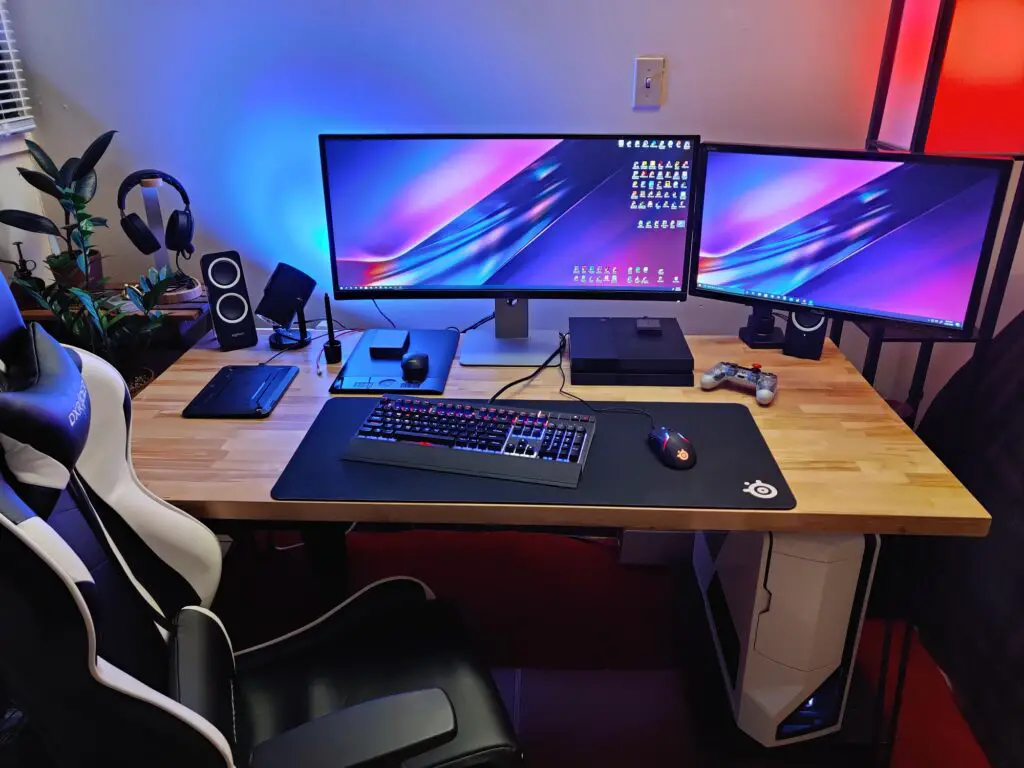Some of the newer gaming laptops have 300Hz displays, and the performance is stellar.
You’ll even find 360Hz displays on laptops, and it’s rumoured that 480Hz displays will be out in 2023. Is a 300Hz display overkill for a PC build?
Most avid gamers are content with their 144Hz and don’t plan to update anytime soon. So, why would you choose a 300Hz over a 144Hz monitor? Here’s everything you need to know about 144Hz vs 300Hz.
Is There a 300Hz Display?
Yes, you can get a 360Hz and 300Hz display on laptops such as ASUS, Dell, and Acer. These laptops retails from $1,500 to $3,000.
Such laptops are aimed at esports gamers who need every advantage they can get.
Higher refresh rates guarantee less input lag, and the esports athletes can get newer information before their competitors. This allows them to react faster than their competitors.
How Do You Benefit From a 300Hz Display?
A 300Hz display is only ideal for those who need it. Esports athletes will have the powerful GPUs needed to run these displays as intended.
Start by checking if your PC build can hit more than 240FPs. If not, a 240Hz display or even a 144Hz should be ideal. Also, confirm whether the performance increase is worth the tradeoffs.
How Do 144Hz Fair Against 300Hz Displays?
300Hz will have an edge in performance provided you have the system to utilize its full capacity. If not, a 300Hz is no different than a lower hertz monitor.
Most laptops users can barely tell the difference between a 144Hz and 240Hz display. Increasing the refresh rate to 300Hz will have the same effect.
It’s a case of diminishing returns. Higher refresh rates aren’t always better. Ideally, you should aim for a decent refresh rate like 144Hz and pair it with a higher resolution such as 1440p.
With such a combination, your 144Hz monitor should fair well against the 300Hz display without taxing the system.

144Hz vs. 300Hz Compared
Everyone interested in gaming is conversant with refresh rates and their uses. Below are more on these refresh rates.
Response Time
Typically, 300Hz displays will have a lower response rate than 144Hz. The lower the response rate, the better as they determine the speed at which pixels react to changes in color.
High-end gaming laptops will have response times lower than 5 milliseconds.
Resolution
If you want 4k/UHD on your gaming laptop, then 300Hz isn’t for you. Higher refresh rates are often paired with lower resolutions capped at 1080p.
A 300Hz display will likely have a 1080p resolution.
If you prefer 4k/UHD, 60Hz and 120Hz would be ideal. At 144Hz, you’d have to settle for full HD and QHD resolutions.
Final Thoughts- Am I Missing Out By Buying a 144Hz Gaming Laptop?
To answer this question, you have to categorize yourself. Are you a casual or novice gamer? Are you an experienced gamer?
Are you an esports player? If you’re a novice or casual gamer, a 144Hz laptop is more than good enough.
A 75-144Hz laptop should offer similar benefits at a lower price.
A 144Hz gaming laptop or monitor isn’t good enough. You’d be missing out. Instead, get the 300Hz or 360Hz gaming laptops.
